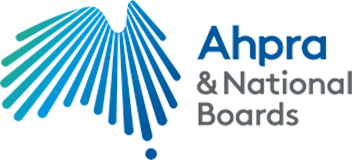Nasal Surgery
ENT Surgery is the only specialty to possess all the training and tools to address problems related to the nose. The surgeons at ENT Victoria routinely assess and treat patients with many different nasal conditions.
Sinusitis
This is a very unpleasant condition that is first managed medically and sometimes surgically for patients with longstanding or severe symptoms. A comprehensive assessment with history, examination (often with nasal endoscopy) and investigations such as CT scanning are used to tailor an individual management plan for our patients.
Surgery for sinus disease is varied and designed specifically for the individual patient. Sinus surgery used to be quite involved and unpleasant but modern techniques have made the impact of the surgery minimal and the post-operative discomfort far less than in the past.
Endoscopic sinus surgery is the mainstay of the surgical management of sinus disease. It requires special equipment and training and the surgeons at ENT Victoria have performed hundreds of these operations. The surgery is often performed as day-surgery and nasal packing (once the greatest fear of nose surgery patients) is very rarely used.
Nasal Obstruction
Once medical treatments such as nasal sprays or allergy treatments have been exhausted or maximized, it is sometimes necessary to consider surgery to correct underlying anatomical problems. Septoplasty with or without turbinate reduction is a common procedure used to correct these anatomical problems. Surgery is usually done as a day procedure and soft dissolvable nasal packing is kept to a minimum.
Nasal Polyps
These are benign inflammatory growths that occur in the nose in response to longstanding allergy. Patients with these may also suffer asthma or other allergic conditions. They usually present with a blocked and runny nose. Once diagnosed, the options of medical or surgical management will be discussed with the patient. If surgery is warranted, endoscopic surgery with or without corrective septoplasty surgery is often performed.
Rhinoplasty
Rhinoplasty is usually described as functional or cosmetic.
The distinction lies in the main aim of the procedure. When an improvement in nasal breathing is the main goal of the nasal surgery, we call it a functional operation. This type of surgery may involve straightening the middle of the nose (septum) as well as the nasal bones and occasionally work is done to the nasal tip to correct drooping or collapse that occurs when breathing in.
Surgery that is done mainly for cosmetic reasons may involve correction of any or all components of the nose to improve the aesthetics of the nose. A significant proportion of rhinoplasty is done to correct both functional and cosmetic concerns.
ENT Surgeons are well placed to perform rhinoplasty as they have a comprehensive understanding of how the nose and sinuses work as well as how the nose should look.
Rhinoplasty operations are only performed after a thorough assessment. This involves a comprehensive history and examination of all aspects of the nose, ears and throat. Objective analysis of the face and formal photography is performed prior to planning any operation. Understanding patient concerns and having a realistic approach to outcomes is critical for this type of surgery.
Nasal surgery is done under general anaesthetic and can usually be performed as a day procedure. Rhinoplasty is generally done as with "open" or "closed" approach. Open rhinoplasty involves an incision between the nostrils and allows excellent exposure of the entire nasal skeleton. It is longer and more complex than the closed approach which is done via incisions inside the nose. There are many different techniques described for the management of each particular aspect of the nasal anatomy and treatment needs to be individualized.
Recovery is usually a week or so and a plaster splint will sit on the nose for 7 days. Bruising and swelling is highly variable and depends on many different factors.
Once medical treatments such as nasal sprays or allergy treatments have been exhausted or maximized, it is sometimes necessary to consider surgery to correct underlying anatomical problems. Septoplasty with or without turbinate reduction is a common procedure used to correct these anatomical problems. Surgery is usually done as a day procedure and soft dissolvable nasal packing is kept to a minimum.




